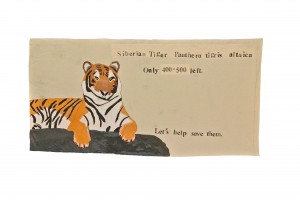
The Siberian or Amur Tiger (Panthera tigris altaica) is the largest of the world’s wild cats. It lives primarily in the birch forests of eastern Russia, China and North Korea. There are currently estimated to be between 400 and 500 Siberian Tigers in the wild.
The belief in traditional Chinese medicine that tiger parts have medicinal properties has greatly reduced the number of critically endangered tiger species. The trade in all tigers and their parts and derivatives are prohibited by the Convention on International Trade in Endangered Species of Wild Fauna and Flora (CITES). It’s worth noting that medicines containing ground parts are harder to police. Fortunately other sustainable natural remedies exist and should be used.
For more on the Siberian Tiger go to: http://animals.nationalgeographic.com/animals/mammals/siberian-tiger/
http://wwf.panda.org/what_we_do/endangered_species/tigers/about_tigers/amur_tiger/
For recent developments go to:
For more on Tigers and traditional Chinese medicine go to:
http://www.tigersincrisis.com/traditional_medicine.htm#sthash.U66sZZrS.dpuf
For information on CITES go to:
For a link to WWF’s Hands Off My Parts page go to:

